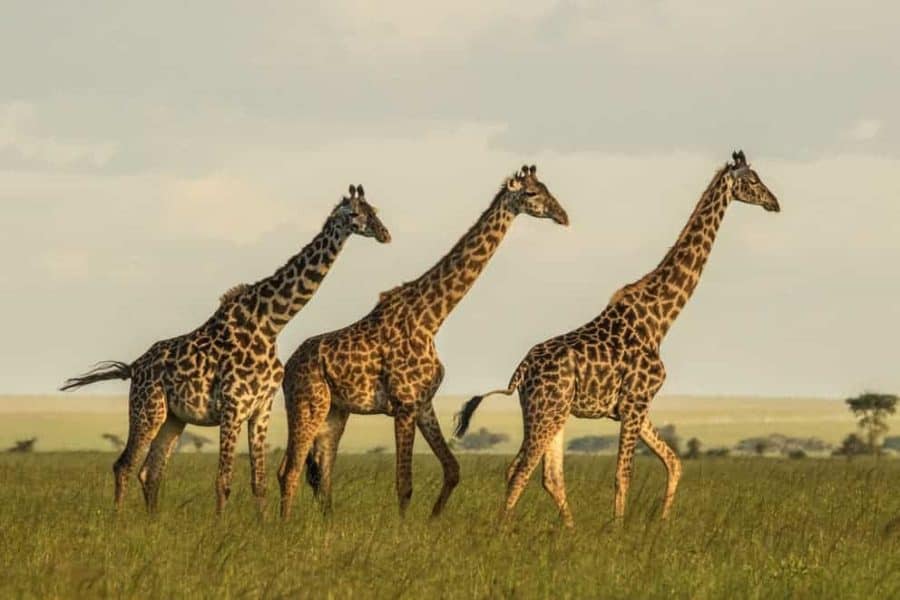New research has uncovered a surprising and often-overlooked limitation in giraffe mobility, one that challenges long-held perceptions of their adaptability to vast landscapes. The study reveals that steep terrain, particularly slopes exceeding 20 degrees, poses an insurmountable barrier to these iconic African mammals, reshaping assumptions about habitat suitability and highlighting critical gaps in current conservation strategies.
Published in British Ecological Society Reports and Proceedings | Estimated reading time: 4 minutes
When we envision giraffes roaming serenely across the endless savannas of Africa, it’s easy to romanticize their freedom as limitless. Yet, the reality of their environment is considerably more constrained, dictated not only by food and water availability but by the very contours of the land. In a pioneering study unveiled at the British Ecological Society’s Annual Meeting in Liverpool, researchers have identified steepness of terrain as a definitive factor influencing giraffe movement—a finding that could upend conventional conservation planning.
Led by Jessica Granweiler, a PhD candidate at the University of Manchester, the study involved tracking the movements of 33 GPS-collared giraffes (10 males and 23 females) across five South African reserves. The data paints a clear and striking picture: giraffes exhibit a strong preference for flat terrain, only tolerating inclines up to 12 degrees when the reward—lush or nutrient-rich vegetation—outweighs the effort. However, slopes steeper than 20 degrees present an absolute threshold, effectively rendering such areas inaccessible.
“Our study shows that giraffes much prefer flat areas,” Granweiler explains. “They will tolerate some steepness to access food, but simply cannot access areas above a 20° gradient. It’s quite shocking when you look at distribution maps.”
The ramifications of this seemingly simple limitation are profound. Across Namibia and Tanzania alone, roughly 8,000 square kilometers of terrain—equivalent to nearly half the size of Wales—could be classified as unusable for giraffes. In Kenya and South Africa, that figure hovers around 4,000 square kilometers. More concerning still, the research indicates a disconcerting paradox: in one-third of the studied countries, protected areas contained more unusable land than the regions beyond their borders.
Professor Susanne Shultz, who supervised the research, underscores the broader conservation dilemma that arises from this mismatch. “Steep and rugged environments are challenging for large-bodied animals, like giraffes. Unfortunately, natural and protected areas are more likely to be placed in such places, which can lead to a mismatch between the landscapes animals ‘want’ to use and the landscapes that we have ‘left’ for them.”
These findings inject a new layer of complexity into the conservation of giraffes, a species already contending with habitat loss, poaching, and human encroachment. Protected reserves, long regarded as sanctuaries, may not always offer the refuge they promise if the land itself proves inhospitable. Conservationists must now grapple with a fundamental question: how do we reconcile land protection efforts with the actual needs of species that depend on it?
As giraffes—animals whose stature makes them a universal symbol of grace and resilience—navigate a changing and fragmented world, this research compels us to rethink our approach. True conservation, it seems, demands not only preserving space but understanding its usability. For these gentle giants, flat plains are more than a preference; they are a necessity for survival.
Glossary
- Gradient: The degree of steepness or slope of a surface, measured in degrees or as a percentage.
- Topography: The arrangement of physical features of an area, including its terrain and elevation changes.
- Habitat suitability model: A scientific tool used to evaluate how appropriate an area is for a particular species based on various environmental factors.
Test Your Knowledge
What is the maximum slope gradient that giraffes can navigate?
Giraffes cannot navigate slopes with a gradient of more than 20 degrees.
Up to what slope gradient will giraffes tolerate if there is favorable vegetation?
Giraffes will tolerate terrain of up to 12 degrees if it leads to favorable vegetation.
How many square kilometers of potentially unusable terrain for giraffes exist in Namibia and Tanzania combined?
Approximately 8,000 square kilometers, which is nearly half the size of Wales.
What critical factor has been overlooked in traditional habitat suitability models for giraffes?
Traditional habitat suitability models have primarily focused on vegetation distribution, predation, and human disturbance while overlooking topography.
Enjoy this story? Subscribe to our newsletter at scienceblog.substack.com.
If our reporting has informed or inspired you, please consider making a donation. Every contribution, no matter the size, empowers us to continue delivering accurate, engaging, and trustworthy science and medical news. Independent journalism requires time, effort, and resources—your support ensures we can keep uncovering the stories that matter most to you.
Join us in making knowledge accessible and impactful. Thank you for standing with us!

